Numbers of Venice
Many guests during their holidays in Ca’Savio ask us about Venice. The most part of them wants to know more about the city and its numbers. How big is the city? How many bridges and islands are there? How are the roads called in Venice? And we could go on and on… So, if you are curious to know our answers, read on our blog!
Venice covers an area of about 400 km² and it is built on 120 islands connected by 391 bridges.
Only 4 bridges cross the Grand Canal (the biggest canal in Venice):
- Scalzi Bridge (located close to Santa Lucia railway station)
- Accademia Bridge (the wooden bridge that links the sestiere of Dorsoduro and San Marco)
- Rialto Bridge (the most popular bridge in Venice)
- Costituzione Bridge (designed by Santiago Calatrava in 2007).
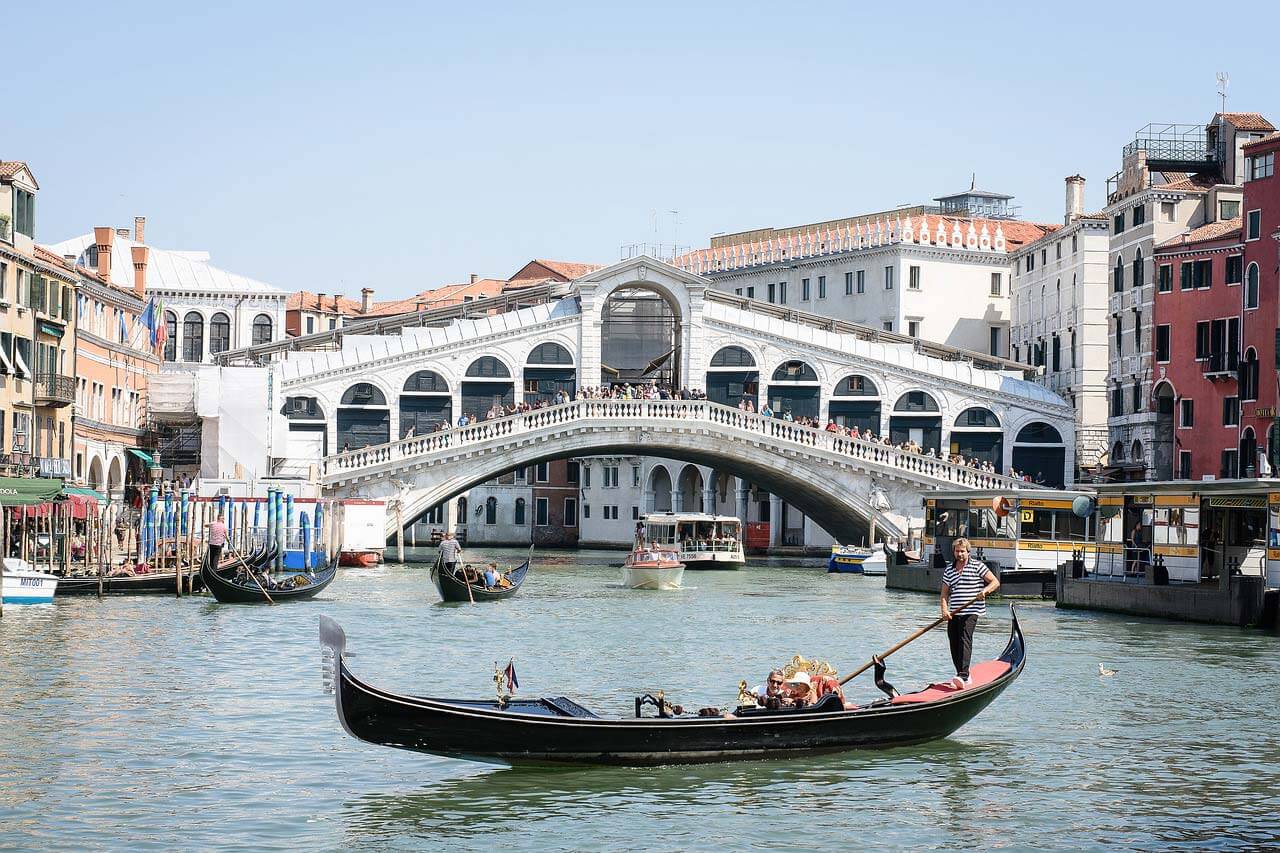
Until 1933 Venice was connected to the mainland only by a railway bridge built in 1846 under the Austrian domination. Today Ponte della Libertà (Freedom bridge) give us the possibility to reach the city also by car or bicycle.
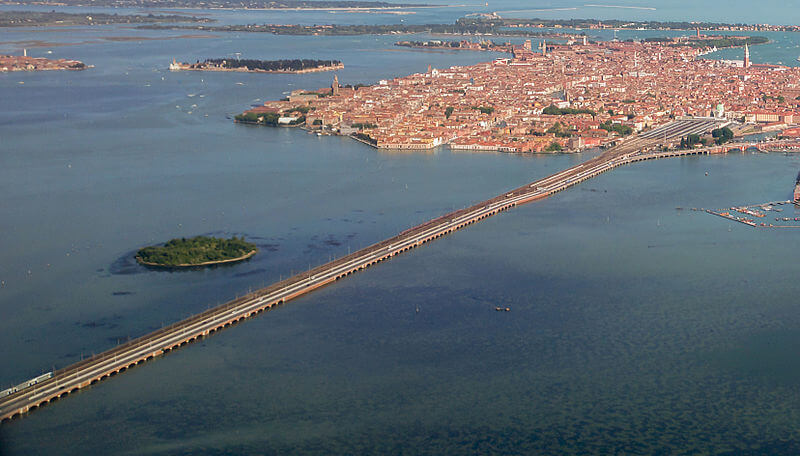
Among the many bridges of Venice, there are some notable because their peculiar name or feature:
- Ponte delle Tette (Tits bridge), located in the former red light district between the district of San Polo and Santa Croce, it is so called because prostitutes used to attract customers by appearing there in topless
- Ponte dei Pugni (Punches), where once violent challenges were held. The bridge is located in the district of Dorsoduro
- Ponte dei Sospiri (Bridge of Sighs) connects the Doge’s Palace with the Prisons. Its name alludes to the sighs of the convicts who could see Venice for the last time through its windows
- In Cannaregio you can see three peculiar bridges: the only one with spires (Ponte delle Guglie), the only one left with three arches (Ponte dei Tre Archi) and Ponte del Chiodo (Nail) famous because it has no parapet.
In Venice there are about 400 canals, but their name is “rii”. The true canals (navigable by a big boat) are only 3:
- Grand Canal
- Cannaregio Canal
- Giudecca Canal.
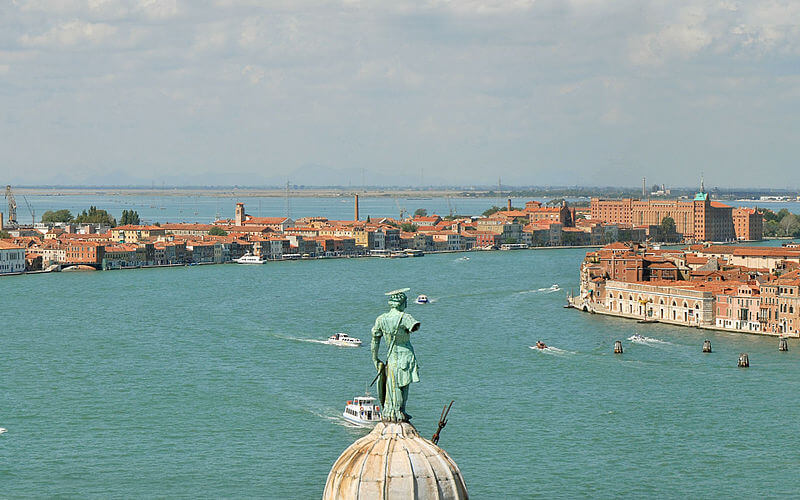
Venice is divided into 6 different sestieri. They are: San Marco, San Polo, Santa Croce, Dorsoduro, Cannaregio and Castello. The house numbering is unique for each sestiere and numbers don’t stop at the end of a street, but they continue throughout the entire sestiere. That’s why you see houses with giant numbers!
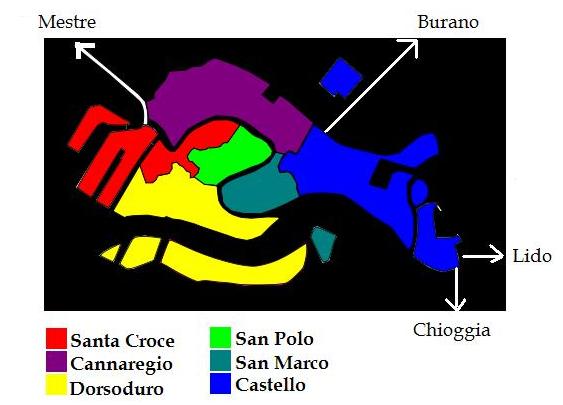
Walking around the city you will find many squares of different sizes. Actually there is only one square in Venice, Piazza San Marco, the rest of them are called “campi” (small squares that once were fields), “campielli” (very tiny squares) and “corti” (small squares located inside a residential complex). Here some numbers:
- 135 campi (the biggest are Campo Santa Margherita, Campo Santi Giovanni e Paolo and Campo San Polo)
- 196 campielli
- 380 corti.
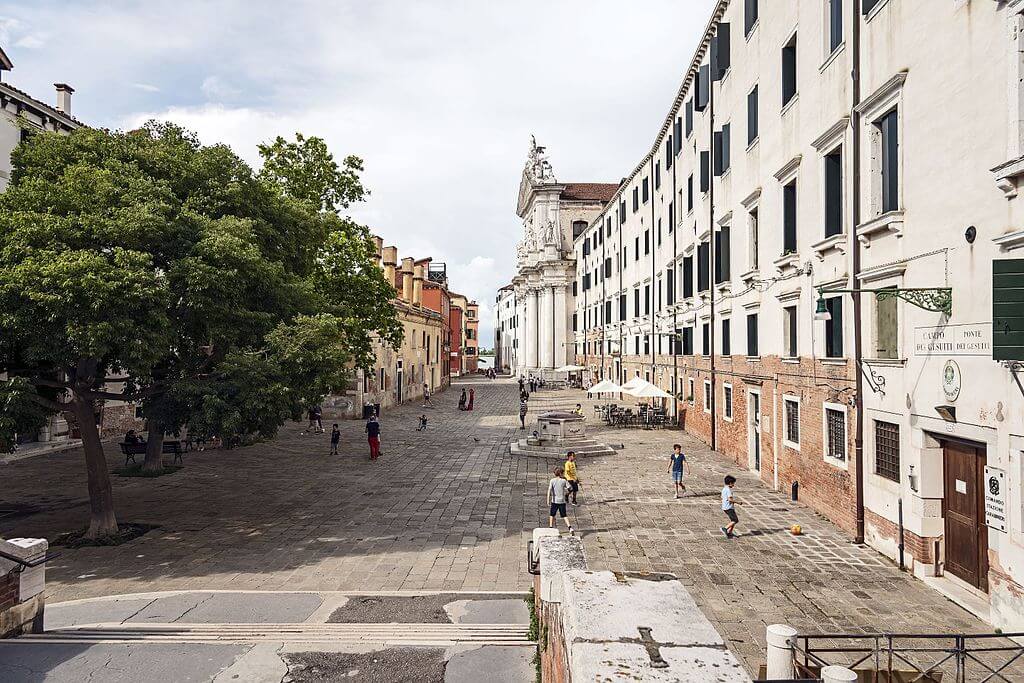
And what about the strange names of Venetian streets? Here the streets are dedicated to churches, famous people or artisan guild of the area, but they are not called street, because there is just only one street in Venice, called Strada Nuova, located in Cannaregio district. Here streets are called “calli” (narrow and log streets), “rami” (smaller streets connceting bigger streets), “rio terà” (buried canals), “salizade” (the first paved streets), “rughe” (streets lined with shops) and “liste” (streets where white stones in the pavement marked the limit of the diplomatic immunity in front of an ambassador palace. The most famous is Lista di Spagna). In Venice there are:
- 3000 calli
- 367 rami
- 53 rio terà
- 42 salizade
- 10 rughe.
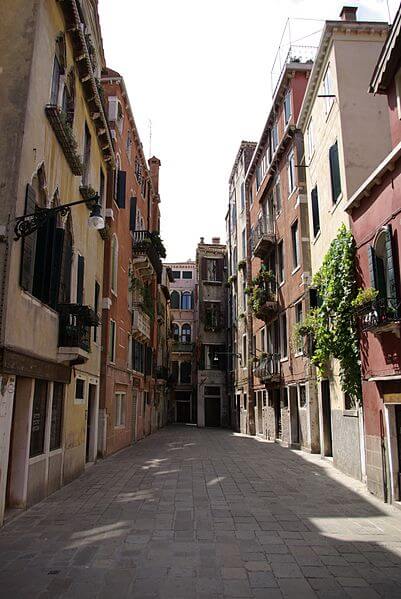
Now you know more about Venice numbers. Ready to leave and discover all of them?
